Sustainable Development Goals
Targets and Indicators with Data Availability
Note: The data may be updated periodically as more information become available.
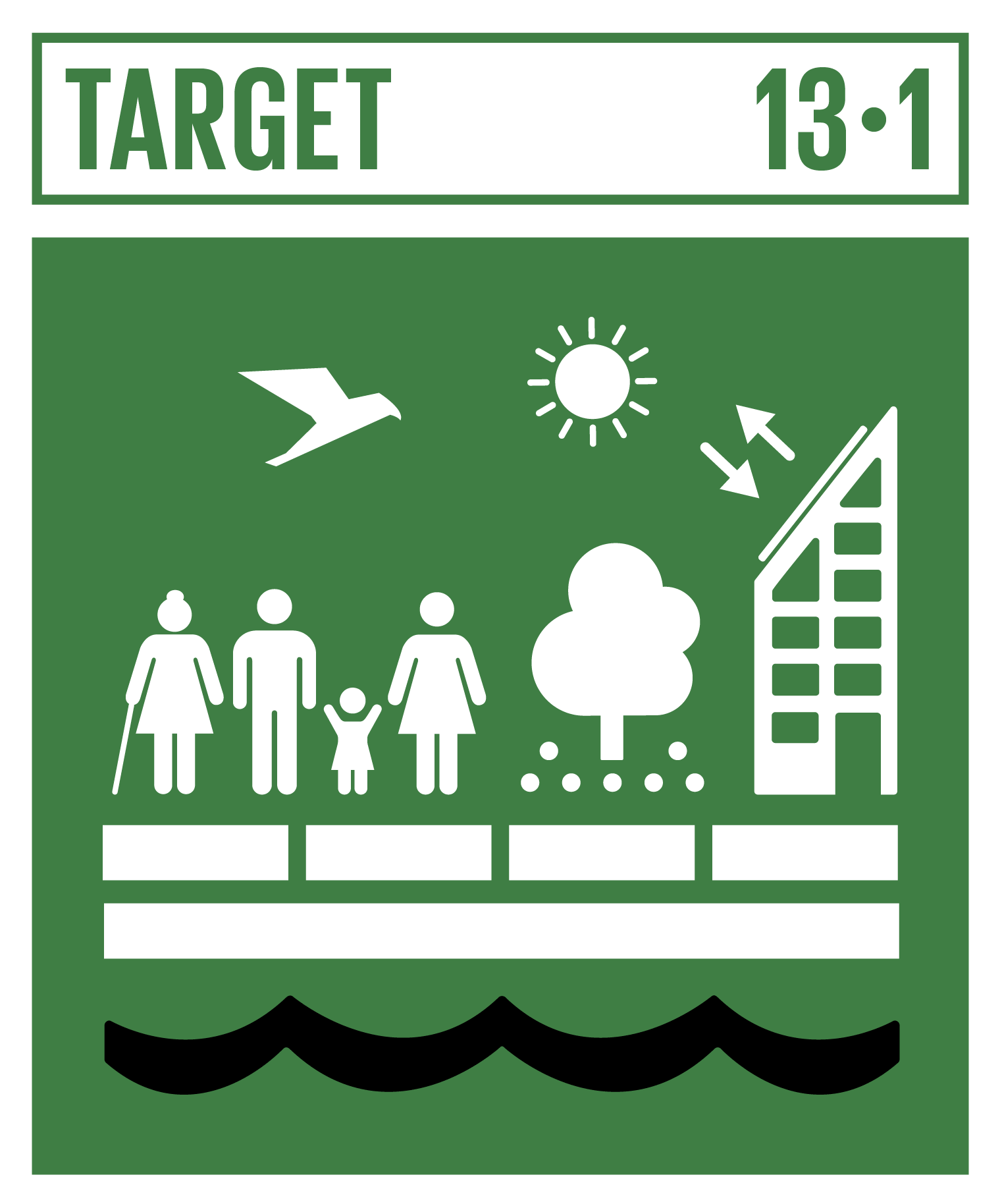 |
Strengthen Resilience and Adaptive Capacity to Climate Related Disasters
Strengthen resilience and adaptive capacity to climate-related hazards and natural disasters in all countries.
|
Indicator 13.1.1 | Number of deaths, missing persons and directly affected persons attributed to disasters per 100,000 population
|
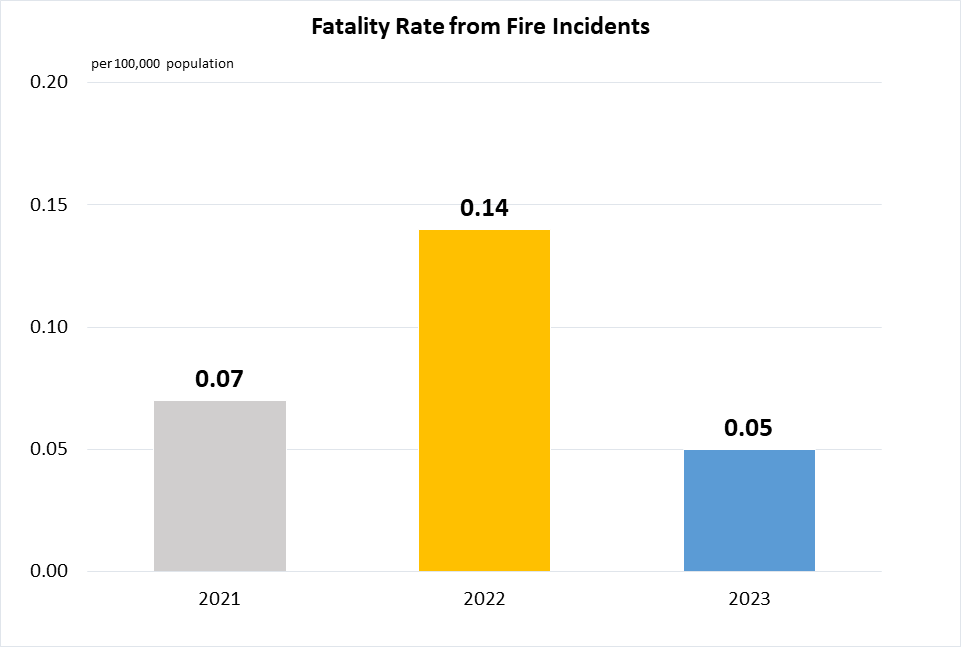
Singapore is not prone to natural disasters.
|
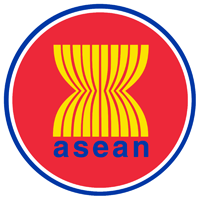 |
Indicator 13.1.2 | Number of countries that adopt and implement national disaster risk reduction strategies in line with the Sendai Framework for Disaster Risk Reduction 2015–2030
|
As a city state, Singapore’s government carries out both national and local functions. Singapore is not prone to natural disasters and therefore does not systematically follow the Sendai Framework for Disaster Risk Reduction 2015-2030. Nevertheless, in areas covered by the Sendai Framework, we have invested in and implemented strategies such as fire safety regulations, public warning systems, community engagement and the use of technology to prevent disasters and risks and improve emergency response.
|
 |
Indicator 13.1.3 | Proportion of local governments that adopt and implement local disaster risk reduction strategies in line with national disaster risk reduction strategies
|
As a city state, Singapore’s government carries out both national and local functions. Singapore is not prone to natural disasters and therefore does not systematically follow the Sendai Framework for Disaster Risk Reduction 2015-2030. Nevertheless, in areas covered by the Sendai Framework, we have invested in and implemented strategies such as fire safety regulations, public warning systems, community engagement and the use of technology to prevent disasters and risks and improve emergency response.
|
 |
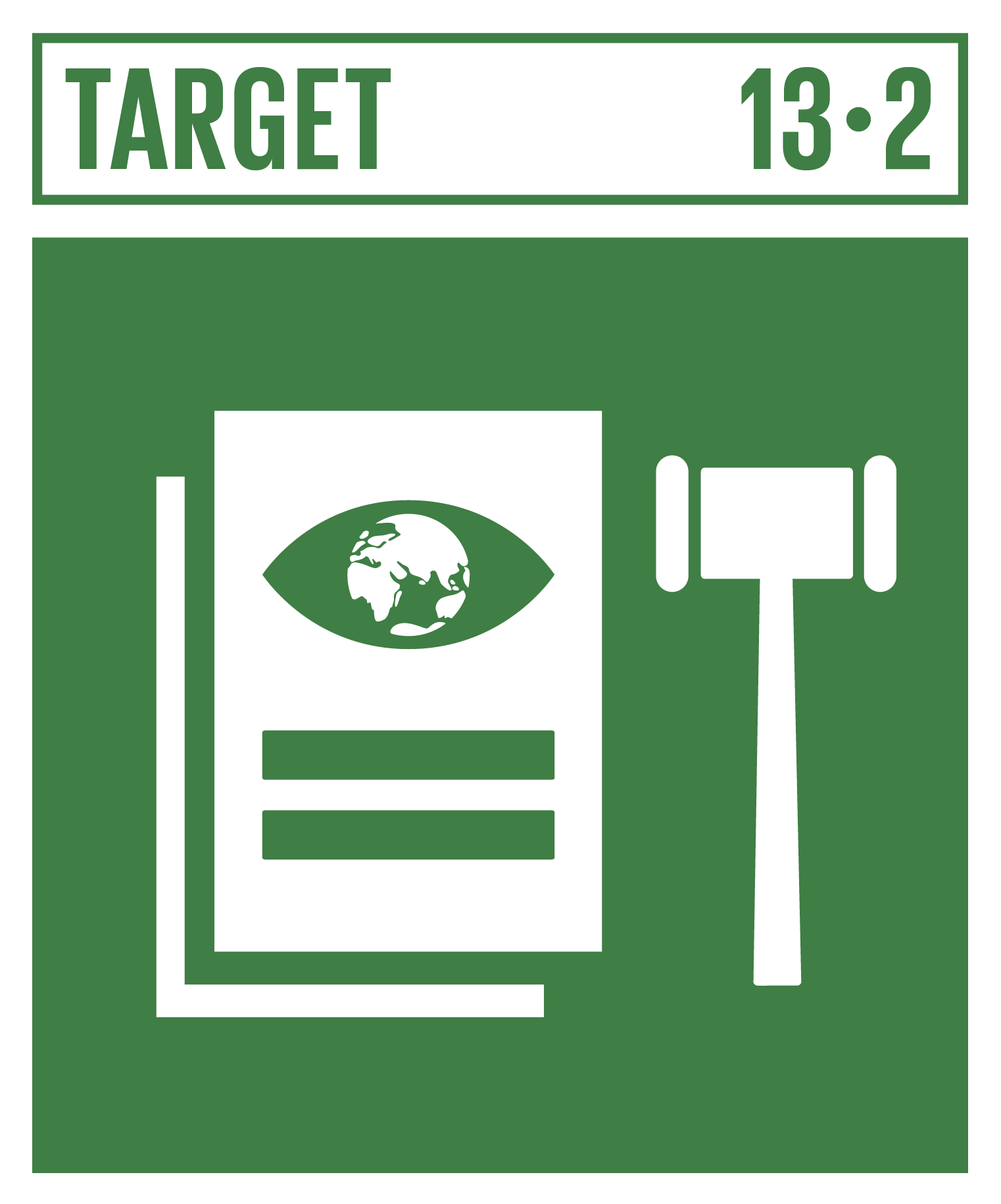 |
Integrate Climate Change Measures into Policies and Planning
Integrate climate change measures into national policies, strategies and planning.
|
Indicator 13.2.1 | Number of countries with nationally determined contributions, long-term strategies, national adaptation plans and adaptation communications, as reported to the secretariat of the United Nations Framework Convention on Climate Change
Indicator 13.2.2 | Total greenhouse gas emissions per year
|
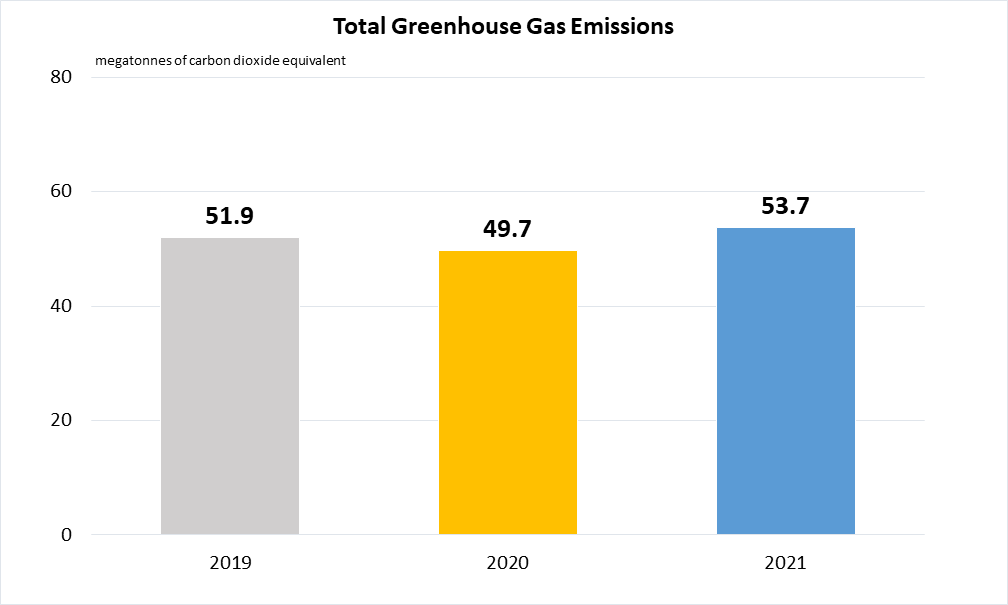
Data include emissions of carbon dioxide (CO2), methane (CH4), nitrous oxide (N2O), hydrofluorocarbons (HFCs), perfluorocarbons (PFCs), sulphur hexafluoride (SF6) and nitrogen trifluoride (NF3). Please see here for more information.
|
 |
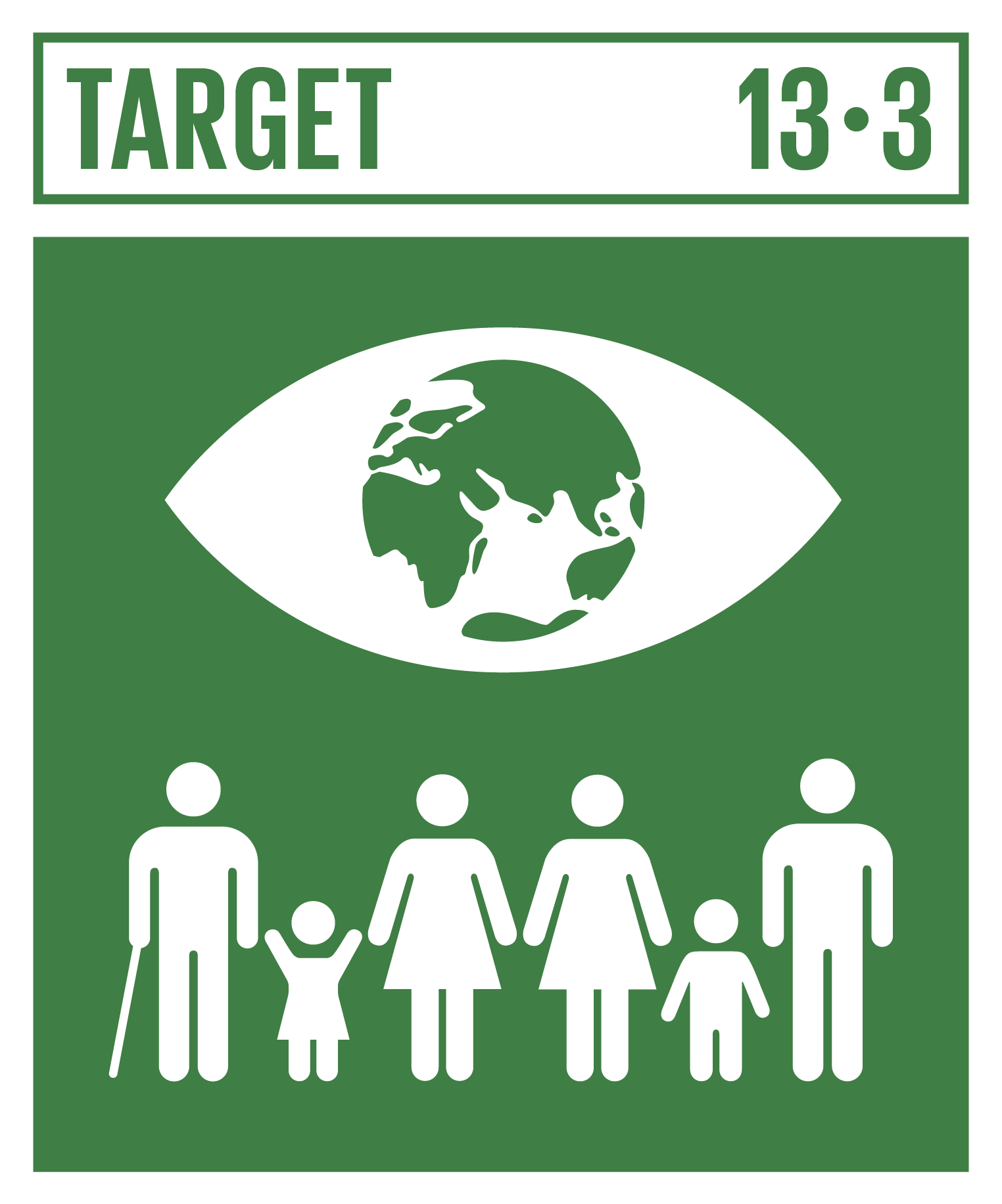 |
Build Knowledge and Capacity to Meet Climate Change
Improve education, awareness-raising and human and institutional capacity on climate change mitigation, adaptation, impact reduction and early warning.
|
Indicator 13.3.1 | Extent to which (i) global citizenship education and (ii) education for sustainable development are mainstreamed in (a) national education policies; (b) curricula; (c) teacher education; and (d) student assessment
|
Since 2021, the Ministry of Education's Eco Stewardship Programme (ESP) has been implemented in all schools to nurture students to be environmental stewards. As the education pillar of the Singapore Green Plan 2030, the ESP integrates sustainability into curricula across levels and subjects, including in the Humanities, Sciences, Food and Consumer Education and Character and Citizenship Education. This is complemented by school-based initiatives for students to further engage in learning experiences related to sustainability. Schools' campuses are also progressively enhanced with sustainability features that help connect students' lived experiences with their learning. Sustainability is featured in teachers' professional learning roadmap, which includes relevant professional development opportunities such as workshops, learning journeys and work attachments.
|
 |
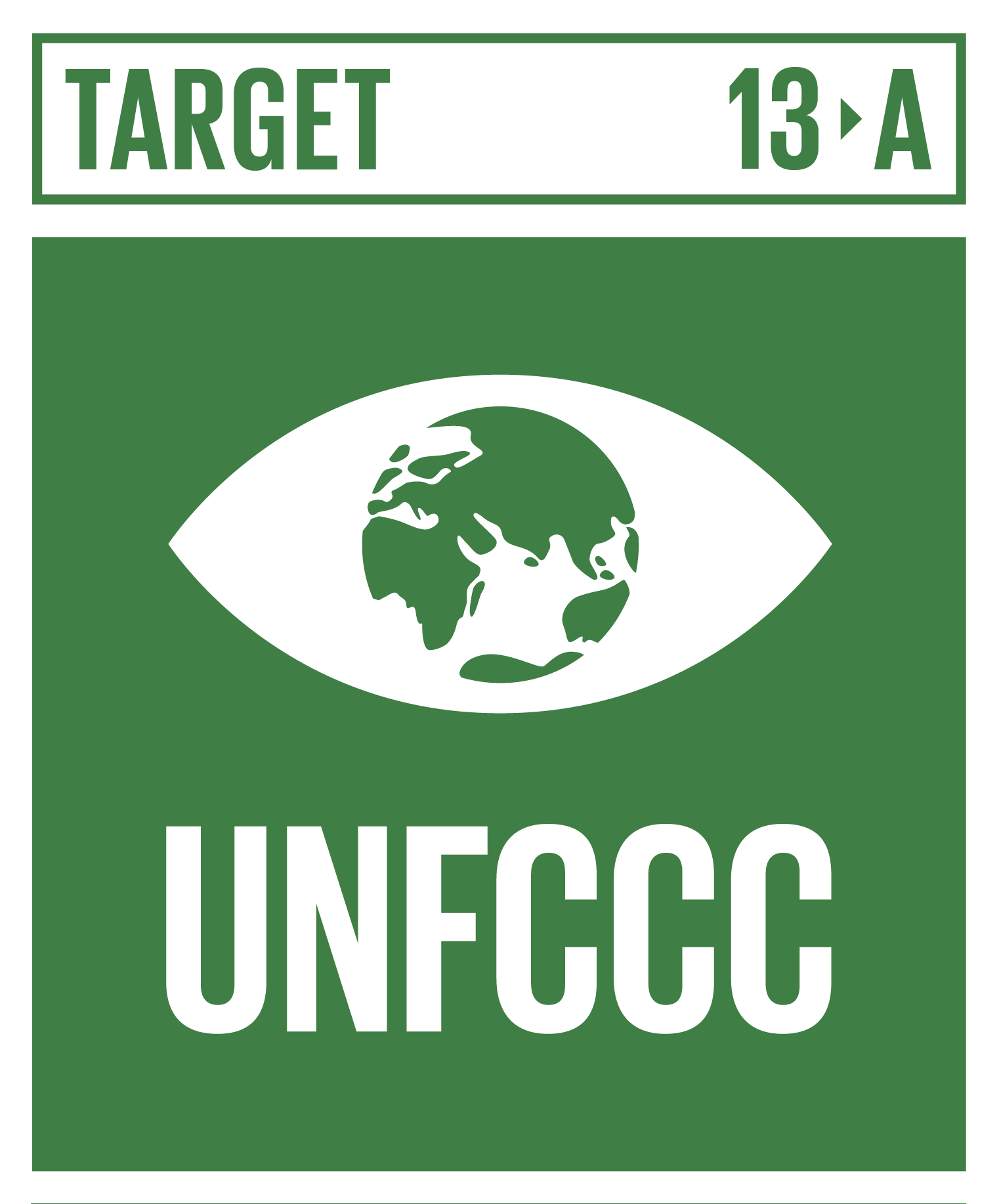 |
Implement the UN Framework Convention on Climate Change
Implement the commitment undertaken by developed-country parties to the United Nations Framework Convention on Climate Change to a goal of mobilizing jointly $100 billion annually by 2020 from all sources to address the needs of developing countries in the context of meaningful mitigation actions and transparency on implementation and fully operationalize the Green Climate Fund through its capitalization as soon as possible.
|
Indicator 13.A.1 | Amounts provided and mobilized in United States dollars per year in relation to the continued existing collective mobilization goal of the $100 billion commitment through to 2025
|
Not applicable. Under the United Nations Framework Convention on Climate Change (UNFCCC), Singapore, as a non-Annex I Party, is not obliged to mobilise climate finance for other developing countries. This was reaffirmed by the Paris Agreement and the decision at the 21st Conference of the Parties (COP-21). Singapore provides capacity building for other developing countries under the Singapore Cooperation Programme, which aims to help them achieve the SDGs.
|
|
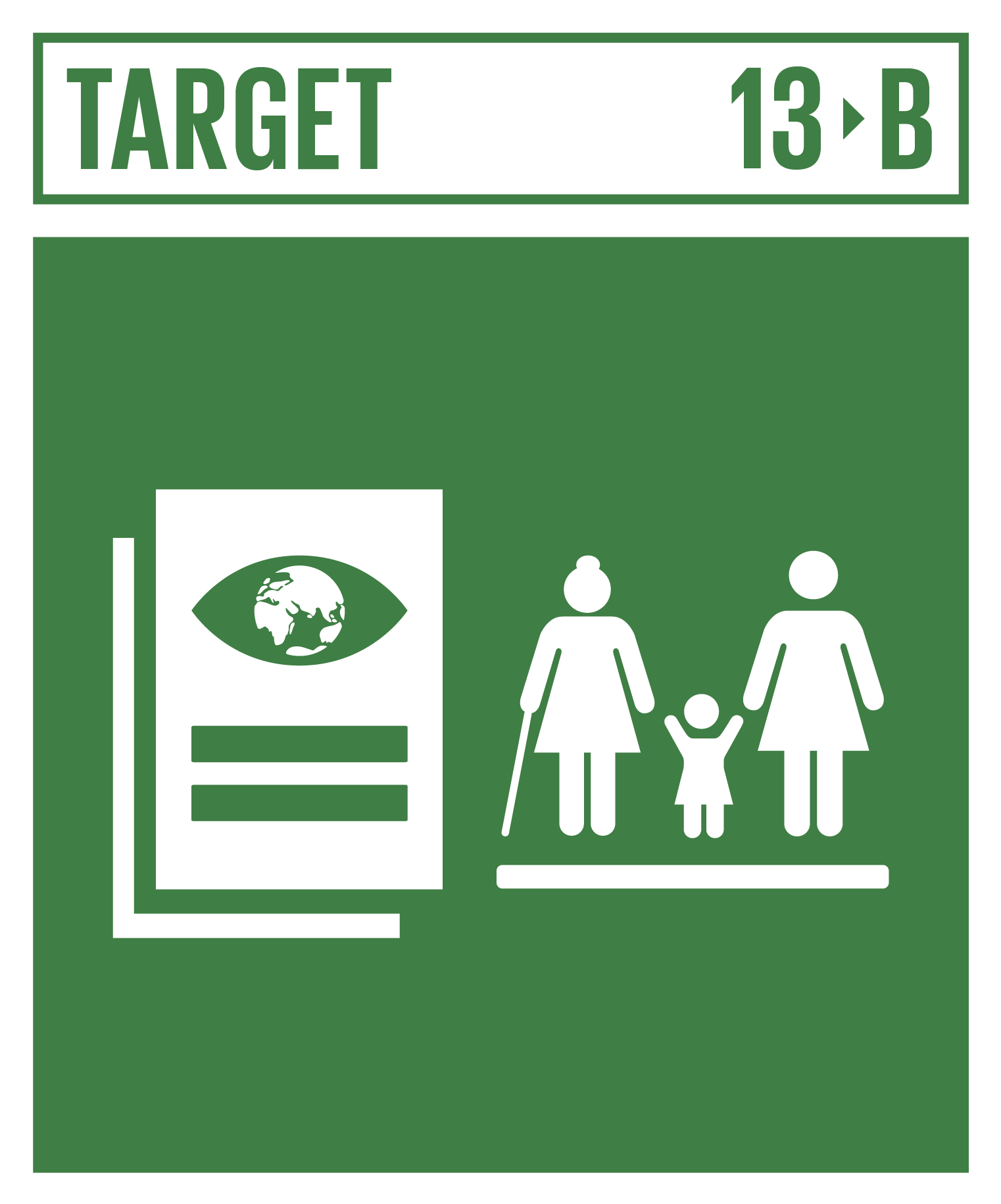 |
Promote Mechanisms to Raise Capacity for Climate Planning and Management
Promote mechanisms for raising capacity for effective climate change-related planning and management in least developed countries and small island developing States, including focusing on women, youth and local and marginalized communities.
|
Indicator 13.B.1 | Number of least developed countries and small island developing States with nationally determined contributions, long-term strategies, national adaptation plans and adaptation communications, as reported to the secretariat of the United Nations Framework Convention on Climate Change